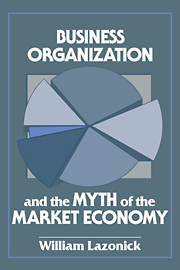Book contents
- Frontmatter
- Contents
- List of figures
- Acknowledgments
- Introduction: the wealth of three nations
- PART I Economic institutions and economic performance
- PART II Intellectual foundations and intellectual constraints
- PART III The “marvels of the market” versus the “visible hand”
- PART IV Overcoming intellectual constraints
- Index
Introduction: the wealth of three nations
Published online by Cambridge University Press: 01 April 2010
- Frontmatter
- Contents
- List of figures
- Acknowledgments
- Introduction: the wealth of three nations
- PART I Economic institutions and economic performance
- PART II Intellectual foundations and intellectual constraints
- PART III The “marvels of the market” versus the “visible hand”
- PART IV Overcoming intellectual constraints
- Index
Summary
Historical foundations for the “invisible hand”
In 1975 the noted institutional economist Robert A. Gordon entitled his American Economic Association presidential address “Rigor and Relevance in a Changing Institutional Setting.” Gordon argued that “the mainstream of economic theory sacrifices far too much relevance in its insistent pursuit of ever increasing rigor.” “We economists,” he complained, “pay too little attention to the changing institutional environment that conditions economic behavior.” Gordon continued, “We do not often enough reexamine our basic postulates in light of changes in this environment, and, perhaps more important, we shy away from the big questions about how and why the institutional structure is changing – and where it is taking us.”
In the history of economic thought, economists have not always ignored the “big questions.” Indeed the attempt to relate economic institutions to economic development was first taken up in a serious way in the late eighteenth century when Adam Smith inquired into the “nature and causes of the wealth of nations.” Writing on the eve of the world's first industrial revolution in an era when ownership and control of the manufacturing enterprise were a proprietary affair, Smith emphasized how the growth of economic individualism would benefit the growth of the economy. And, indeed, as I shall outline in Chapter 1, Britain's rise to its position of industrial leadership in the nineteenth century did rely on highly specialized proprietary firms, the activities of which were coordinated by market relations.
- Type
- Chapter
- Information
- Publisher: Cambridge University PressPrint publication year: 1992



